
Table of contents:
- Stomatitis in cats: a variety of causes and types of course
- Stomatitis and its causes
- How does stomatitis manifest in cats and cats
- Types of stomatitis
- When you need to urgently see a veterinarian
- How to treat a disease at home
- Features of the course and treatment of stomatitis in pregnant cats and kittens
- Prevention of stomatitis
- Veterinarian recommendations
- Author Bailey Albertson [email protected].
- Public 2024-01-17 22:26.
- Last modified 2025-06-01 07:32.
Stomatitis in cats: a variety of causes and types of course

Cats are distinguished by secrecy and patience, and often the owner, seeing foci of redness in the cat's mouth, does not attach any importance to this. But when the pet's behavior changes with the development of the disease, both the owner and the pet will have to pay a completely different price for recovery from advanced stomatitis than in the treatment of pathology at an early stage.
Content
-
1 Stomatitis and its causes
- 1.1 Factors contributing to the development of pathology
- 1.2 Is stomatitis in cats a danger to humans?
-
2 How is stomatitis manifested in cats and cats
- 2.1 Forms of the disease
- 2.2 The main symptoms of stomatitis
- 2.3 Video: stomatitis in cats
- 2.4 Diagnosis of stomatitis
-
3 Types of stomatitis
- 3.1 Catarrhal
- 3.2 Ulcerative
- 3.3 Phlegmonous
- 3.4 Gangrenous
-
3.5 Lymphocytic-plasmacytic
3.5.1 Photo gallery: stomatitis in cats
- 4 When you need to urgently contact the veterinarian
-
5 How to treat a disease at home
- 5.1 First aid for a pet
-
5.2 Treatment regimen depending on the type of stomatitis
- 5.2.1 Table: remedies for stomatitis treatment
- 5.2.2 Photo gallery: drug therapy for stomatitis in cats
- 5.3 Folk remedies for stomatitis
- 5.4 Rules for conducting medical procedures
- 5.5 Video: treatment with Metrogyl Denta gel
- 5.6 Taking care of sick animals
- 6 Features of the course and treatment of stomatitis in pregnant cats and kittens
- 7 Prevention of stomatitis
- 8 Recommendations of veterinarians
Stomatitis and its causes
Stomatitis is an inflammation of the oral mucosa with possible spread to:
- gums;
- tongue;
- hard and soft palate;
- the mucous membrane of the inner surface of the lips and cheeks;
- tonsils and palatine arches;
- the mucous membrane of the floor of the mouth.
With the spread of the inflammatory process from the mucous membrane, it is possible to involve:
- periodontal;
- salivary glands;
- the tissues of the mucous membrane adjacent to the affected area (with the spread of inflammation in breadth) and the underlying (with the spread in depth); with an active process, it is possible to form extensive and deep defects of the mucous membrane, the bottom of which will be bone tissue;
- bone tissue with the formation of osteomyelitis;
- regional lymph nodes - primarily parotid and submandibular.
The spread of the inflammatory process is also possible, due to the peculiarities of the anatomy, to:
- the mucous membrane of the nasal cavity (with the development of rhinitis) and the paranasal sinuses (with the formation of sinusitis);
- Eustachian tube (will lead to otitis media);
- nasolacrimal canal (will lead to inflammatory diseases of the eyes, primarily conjunctivitis);
In a state of immunodeficiency, pathogens may enter the systemic circulation and form distant septic foci in:
- lungs;
- liver;
- spleen;
- heart with damage to the valve apparatus;
- other organs.

Determining the cause that caused stomatitis is extremely important for its successful cure.
Factors contributing to the development of pathology
Depending on the cause of stomatitis, they are divided into:
-
Primary - when stomatitis is an independent disease, and the factors that triggered it are in the oral cavity. The reasons may be:
- non-observance of cat oral hygiene, leading to the formation of plaque, caries, periodontitis, gingivitis;
- feeding the pet too hot or cold food, which entails chronic irritation of the oral mucosa and suppresses local immunity;
- the use of solid food, leading to trauma to the mucous membrane - bones, crackers;
- malocclusion and tooth formation, with both excessive accumulation of plaque and possible chronic traumatization of the mucous membrane by displaced teeth;
-
the ingestion of irritating fluids in the cat's mouth, which, in addition to stomatitis, can cause poisoning (most often this happens when the pet licks them off the coat); these stomatitis develop quickly, immediately after exposure to the substance:
- household chemicals containing acids and alkalis;
- medicines;
-
eating houseplants (eating dieffenbachia is especially dangerous):
- severe irritation of the oral mucosa;
- edema of the walls of the oropharynx;
- development of ulcerative stomatitis;
- detergents - shampoos that are not intended for the care of the cat's hair or of poor quality (it is worth remembering that the cat licks the remains of detergents from the fur);
- change of teeth in kittens;
- feeding cats from dirty dishes.
-
Secondary - stomatitis is a symptom or consequence of another disease:
-
infectious diseases:
- calicivirus;
- panleukopenia;
- viral leukemia;
- viral immunodeficiency;
- herpes;
- human papillomavirus infection;
- leptospirosis;
-
endocrine and metabolic disorders:
- diabetes mellitus;
- uremia;
- liver failure;
-
fluctuations in the content of sex hormones:
- pregnancy;
- castration, sterilization;
- allergic and autoimmune reactions;
-
diseases of the digestive system:
- gastritis;
- colitis;
- hepatitis;
- anemia;
- fungal infections;
- prolonged dehydration;
- immunodeficiency states of any origin;
- general exhaustion;
- stress;
- oncological diseases, especially with tumor localization in the head and neck area;
- taking certain medications, for example, cytostatics;
- radiation injuries.
-
- Idiopathic - when the cause of the disease has not been established, then the effect of other factors is refuted by the method of exclusion.

Dieffenbachia is a common houseplant that can cause severe stomatitis in cats.
Is stomatitis in cats a danger to humans?
Primary stomatitis in cats does not pose a danger to healthy adults if they follow the rules of hygiene when communicating and caring for a sick pet. But given the variety of microbial flora characteristic of the oral cavity of a cat and its high amount in stomatitis, pregnant women and persons with immunodeficiency should be protected from caring for a sick cat until its recovery.
If we consider secondary stomatitis, then here it is worth assessing the danger to a person of the underlying disease. For example:
- when caring for a pet with stomatitis that has developed against the background of panleukopenia or diabetes mellitus, there is no danger;
-
against the background of leptospirosis - the danger is high, protection of the caregiver is necessary not only by observing personal hygiene and using barrier agents in the form of a mask and gloves, but also by taking a preventive antibacterial drug.

Biological protection kit: mask, goggles, gloves When caring for a cat with leptospirosis, it is necessary to use personal protective equipment
How does stomatitis manifest in cats and cats
Stomatitis is manifested by various forms of inflammation of the oral mucosa and the possible sequential involvement of adjacent tissues.
Forms of the disease
In the course of the disease, there are:
- acute form - usually lasts from 4 days to 2 weeks and ends with full recovery with restoration of the oral mucosa and normalization of the animal's condition;
- chronic form - as a rule, this does not eliminate the action of predisposing factors or the disease, the symptom of which is stomatitis, the appearance of new lesion zones against the background of already existing and not having time to heal mucosal defects is characteristic; chronic forms characterize the weakness of the immune system.
The main symptoms of stomatitis
The first symptoms of stomatitis often pass unnoticed by the owner of the animal, and the cat receives attention to its condition, as well as treatment, when the disease is already thoroughly neglected. In addition to changes in the oral mucosa, stomatitis has a number of manifestations that vary depending on the prevalence of the process, as well as its severity.
Early manifestations include the following conditions:
- the cat stops the characteristic thorough washing and grooming of the coat, because it experiences pain when the jaws move;
- grabs the toy with its mouth and immediately throws it;
- trying to reduce pain in the mouth, the animal rubs its muzzle on the floor and surrounding objects;
- if the cat eats dry food, she refuses it (a hungry pet comes up to the bowl, takes the food into its mouth and spits it out, as if burning itself), while eating, the cat tries to choose softer pieces, chews slowly, popping appears;
- when trying to open the mouth and examine the oral cavity, the previously calm animal resists actively, pulling out, biting and scratching;
- irritability and aggressiveness appear.
With the further development of the disease, the following is observed:
-
increased salivation, development of salivation;

Admixture of blood in saliva with drooling in a cat An admixture of blood in saliva is characteristic of stomatitis.
- thirst;
- unpleasant smell from the mouth;
- change in the appearance of the coat: the coat is disheveled, it may smell unpleasant;
- deterioration in appetite, the cat ignores not only dry food, but also favorite treats.
These symptoms occur with severe stomatitis, as well as in its advanced cases:
- general depression, drowsiness;
- losing weight;
- fluctuations in body temperature;
- regional lymphadenitis develops - the submandibular and parotid lymph nodes increase in size and form packets that are painful on palpation;
- an admixture of blood, ichor or pus appears in the flowing saliva;
- discharge from the eyes and nose appears;
- the lips are swollen and puffy;
- there may be tooth loss.
With secondary stomatitis, the clinical picture of the underlying systemic disease develops in parallel, against which stomatitis has arisen.
Video: stomatitis in cats
Diagnosis of stomatitis
The diagnosis of stomatitis can be easily established by both a veterinarian and the owner of the animal himself, having seen inflammatory changes in the areas of the mucous membrane in the cat's mouth. The type of inflammatory changes is determined by the form of the inflammatory process.
Unlike establishing a diagnosis, it is sometimes difficult to determine the cause of the development of stomatitis, and this requires additional examination methods:
- general blood and urine tests;
- biochemical blood test;
- ELISA and PCR, aimed at searching for certain infections, when a secondary nature of stomatitis is suspected;
- bacteriological analysis to determine the nature of the flora and its sensitivity to antibiotics;
- biopsies of the affected areas to clarify the nature of the inflammation;
- X-ray of the skull to search for altered areas in the area of the roots of the teeth, as well as if osteomyelitis is suspected.
It is possible to reliably cure the disease and provide a favorable prognosis if the cause of the development of stomatitis is accurately identified and eliminated, which can only be done by a veterinarian. Self-treatment of stomatitis can cause a temporary improvement in the course of the disease, but without establishing its root cause, it will result in a chronic process. In addition, while treating stomatitis on their own, the owner of the cat can ignore the symptoms of an underlying disease that threatens the life and health of the pet, but which would not escape the attention of the veterinarian.

Most often, irritating substances leading to stomatitis are licked off the paws or fur
Types of stomatitis
The types of stomatitis are determined by the type of inflammation, which, in turn, depends on both the composition of microbial pathogens and the reactions of the immune system.
Catarrhal
The most common and simple form of stomatitis. Areas of redness and swelling of the oral mucosa are characteristic. Most often, catarrhal stomatitis in a cat proceeds unnoticed by its owner. In most cases, this type of pathology is primary. The microbial flora of the oral cavity is involved in the inflammatory process, but its role is not significant for its development. In the overwhelming majority of cases, the prognosis is good, the disease ends with recovery. On the other hand, with an unfavorable development of events, the transition of this form to others, differing in a much more severe course, as well as chronicity, is possible.
Ulcerative
Ulcerative stomatitis develops against the background of the previous catarrhal. On the edematous and reddened mucous membrane, superficial punctate defects first appear - erosion, with an increase and deepening of which ulcers form. Also, erosion can merge with each other, forming surfaces covered with fibrin films - therefore, some authors additionally highlight the diphtheria form of stomatitis. Ulcerative defects have different sizes, depths and localization in the oral cavity, but all of them are highly painful. Ulcerative stomatitis often occurs in end-stage renal disease.
Phlegmonous
With phlegmonous stomatitis, infection occurs with a pyogenic flora, which spreads in the thickness of the mucous membrane. The resulting pus exfoliates the epithelium and, if damaged, flows out. If untreated, this form is complicated by bacterial sepsis. The prognosis depends on the underlying cause; for example, with phlegmonous stomatitis, which complicated a large wound of the mucous membrane and was treated on time, the prognosis is favorable, in all other cases it speaks of a weakness of the immune system and its inability to restrain microbial aggression, therefore the prognosis can be both cautious and unfavorable, especially with secondary stomatitis …
Gangrenous
Gangrenous - a severe form of stomatitis, usually develops in its chronic course with the addition of putrefactive flora, it can also be complicated by sepsis and is characterized by a deep suppression of the functions of the immune system. Necrosis and rejection of mucosal sites occurs, the borders of the affected area tend to expand. The general well-being of the cat suffers greatly. The gangrenous form of stomatitis rarely occurs initially, which makes its treatment very difficult, and the prognosis is from cautious to unfavorable.
Lymphocytic-plasmacytic
This type of stomatitis has an autoimmune nature, in which there is a change in the reactivity of the cells of the immune system, and they attack the cat's own teeth, causing a strong inflammatory reaction with the subsequent attachment of the secondary microflora of the oral cavity, which further aggravates the course of the disease.
There are some signs that distinguish the autoimmune form from the rest:
- at the beginning of the disease, a clear localization of the first foci of inflammation in the projection of the roots of the teeth is characteristic - along all arcades, over time the process becomes diffuse, and this sign becomes unobvious;
- resistance of the disease to traditional treatment regimens with antibiotics and antiseptics.
The diagnosis can be confirmed by biopsy of an area of inflamed tissue containing a high number of immunocompetent cells, which is typical for autoimmune diseases.
Photo gallery: stomatitis in cats
-

Normal view of a cat's mouth - The mucous membrane of the cat's oral cavity is normally uniform light pink in color
-

Ulcers on the tongue of a cat - At the first stage of ulcerative stomatitis, bright areas of erosion appear on the tongue
-

Ulcerative defects in the tongue of a cat - Over time, there is a tendency of ulcerative defects to bleed.
-

Redness of the gums in a cat - Autoimmune stomatitis is characterized by primary localization in the projection of the roots of the teeth on both jaws
When you need to urgently see a veterinarian
A veterinarian should be consulted in all cases of detection of areas of inflammation in the mouth of a cat, even if their origin seems obvious. This is due both to the possibility of complications in the course of a simple catarrhal form of stomatitis due to the aggressive composition of the microflora of the cat's oral cavity, and to the need to eliminate local factors that caused the development of the disease in primary stomatitis, and even more so to treat the underlying disease if stomatitis is secondary.
How to treat a disease at home
At home, the veterinarian's appointments and cat care are carried out.
First aid for a pet
First aid to the pet consists in irrigating the oral cavity with an antiseptic solution and providing an examination by a veterinarian.
Treatment regimen depending on the type of stomatitis
Treatment of stomatitis involves a set of measures:
-
for all stomatitis, given the aggressive nature of the flora in the mouth of a cat, antibacterial therapy is prescribed:
- Sinulox;
- Metronidazole;
- Stomorgil;
- Lincomycin;
- with severe pain syndrome, Buprenex is prescribed;
-
the oral cavity is irrigated with antiseptic solutions:
- an aqueous solution of chlorhexidine;
- Miramistin;
- a pale pink solution of potassium permanganate;
-
ulcerative defects are treated:
- 1-2% solution of Protargol;
- Lugol's solution;
- 0.2% gramicidin solution;
-
topically applied gels:
- Metrogyl Denta;
- Holisal;
- Dentavidin;
- Actovegin;
-
antihistamines are used to prevent allergic reactions in severe stomatitis:
- Tavegil;
- Suprastin;
- Pipolfen;
-
corticosteroids are prescribed with caution by the decision of the veterinarian in parallel with antibiotics to reduce the intensity of the inflammatory reaction both in autoimmune stomatitis and in severe non-autoimmune forms:
- Prednisolone - is prescribed systemically for 2 weeks;
- Triamcinolone - used for local injection;
- immunosuppressants - used to treat lymphocytic-plasmacytic stomatitis (Cyclosporin);
-
with the fungal nature of the flora, they are prescribed:
- Ketoconazole;
- Fluconazole;
- fortifying drugs (Catosal).
Table: remedies for the treatment of stomatitis
| A drug | Structure | Operating principle | Price, rubles |
| Sinulox |
|
Broad spectrum antibiotic. Do not use during pregnancy and feeding. | 910 |
| Stomorgil |
|
Broad spectrum antibiotic with activity against anaerobes. Suitable for pregnant and lactating cats. | 1340 |
| Metrogyl Denta | Metronidazole topical gel | Destroys anaerobic bacteria at the site of application | from 195 |
| Buprenex | Buprenorphine | Central analgesic; cats tolerate it well | List A, you can buy only at the veterinary clinic by doses, the price is low |
| Cyclosporine | Cyclosporine | Immunosuppressant, inhibits the clone of T-lymphocytes, reducing the intensity of the autoimmune reaction | 2500 |
| Prednisolone | Prednisolone, glucocorticoid |
|
from 40 |
| Ketoconazole | Ketoconazole | Antifungal drug of systemic action, prescribed for candidiasis | from 121 |
| Catosal |
|
Cannot be used for autoimmune stomatitis |
767 |
Photo gallery: drug therapy for stomatitis in cats
-

Catosal - Catosal helps to significantly increase the resistance of the feline body to the harmful effects of disease-causing agents.
-

Miramistin - Miramistin is an antiseptic that prevents the development of microbial flora
-

Lugol's solution - Lugol's solution shows excellent disinfecting properties when directly treating ulcers
-

Metrogyl Denta - Metrogyl Denta is an antimicrobial drug in the form of a gel, used for infectious and inflammatory diseases of the oral cavity
-

Tavegil - Tavegil is an anti-allergic agent, with stomatitis it can reduce tissue edema
-

Prednisolone - Prednisolone is a hormonal drug that helps to quickly relieve inflammation
-

Sinulox suspension - Sinulox is a broad-spectrum antibiotic
In the treatment of stomatitis, the assistance of a veterinary dental surgeon is often necessary, who conducts:
-
for all stomatitis:
- removal of supragingival and subgingival calculus;
- polishing of dental crowns;
- application of fluorides, since with stomatitis, tooth enamel is quickly destroyed;
-
tooth extraction:
- with foci of bone resorption in the root zone;
- with broken crowns;
- improperly growing teeth;
- surgical treatment of soft tissues with excision of necrosis zones in severe stomatitis;
-
with autoimmune stomatitis:
-
with the resistance of lymphocytic-plasmacytic stomatitis to the therapy, a decision is made to remove teeth to improve the prognosis:
-
premolars and molars are removed first;

Removed molars and premolars for autoimmune stomatitis in cats With the resistance of autoimmune stomatitis to the treatment being carried out, molars and premolars are removed to improve its course
- while maintaining the activity of inflammation, canines and incisors are removed;
-
- if it is impossible to provide thorough care of the pet's oral cavity at home, the veterinarian may decide to remove teeth at an early stage of the disease.
-

In the treatment of stomatitis, you cannot do without the help of a veterinarian-dentist
Folk remedies for stomatitis
Folk remedies are also used to treat stomatitis:
- Chamomile infusion: 15-20 g of dry inflorescences pour a glass of boiling water, you can add 4 g of boric acid.
-
A decoction of oak bark is the best agent that has antimicrobial, anti-rot, astringent, hemostatic and anti-inflammatory effect:
- Pour a tablespoon of bark with 250 ml of boiling water.
- Boil for another 20 minutes.
- Cool and filter through cheesecloth.
These agents irrigate the cat's mouth.

It is very useful to supplement the treatment regimen with irrigation of the oral cavity with a decoction of oak bark.
Folk remedies cannot be the only way to treat stomatitis in a pet. They should only be considered as adjunctive therapy.
Rules for conducting medical procedures
With stomatitis, the pet's oral cavity should be properly treated:
-
Prepare and place closer:
- decoctions of herbs or antiseptic solutions;
- Lugol's or Protargol's solution;
- a syringe or small syringe for flushing fluid;
- cotton buds.
- If the cat is aggressive, swaddle him with a towel. As the treatment continues, the pet will get better, the aggression will decrease, then it will be possible to do without fixation.
- Wear gloves.
- Open the cat's mouth, tilt its head forward so that it does not swallow the liquid.
- Place the nozzle of the syringe or syringe in the area of one of the corners of the cat's mouth and inject the rinsing solution, directing the stream to the gums. The mouth is washed 5-6 times a day with a volume of 5-10 ml; kittens have less volume;
- Moisten a cotton swab in a cauterizing solution (Lugol, protargol), open the mouth again and treat ulcers or erosion. Spot treatment of mucosal defects is performed 3-4 times a day.
- Praise and release the cat.
Video: treatment with Metrogyl Denta gel
Caring for a sick animal
When caring for a cat, attention is paid to:
- Cat food. Food should be soft, and in case of severe disease - liquid. Food for the cat should be a little warm. It should be offered frequently, in small portions. After feeding, be sure to wash the mouth. If the cat refuses to eat, the broth is injected with a syringe. If this is not possible for any reason, a nasogastric tube is placed in the veterinary clinic for feeding.
- Availability of water - the pet should drink plenty of clean water at room temperature, dehydration makes stomatitis worse.
- Oral hygiene - in the veterinary clinic, teeth are cleaned and tartar removed under sedation, after which the teeth should be kept clean. Perhaps, with the common nature of stomatitis, they should not be cleaned with a toothbrush, so as not to additionally injure the mucous membrane, but you can wipe the crowns of the teeth with a gauze napkin to remove soft plaque, which is abundantly formed during stomatitis, both due to the inflammatory process and due to eating soft feed. You also need to remove plaque from the tongue.
- Care of the coat - you should comb it out, to eliminate the unpleasant odor of the coat, you can use a dry shampoo.
- The cleanliness of the beds. It is necessary to lay a disposable diaper on the cat's resting place and change it, as drool will flow onto it.
- Anesthesia for a cat - uncontrolled severe pain syndrome causes stress and significantly shifts the recovery time. An analgesic is prescribed only by a veterinarian.

With stomatitis, the cat is fed only soft and warm food.
Features of the course and treatment of stomatitis in pregnant cats and kittens
Both pregnant cats and kittens are prone to stomatitis. Pregnant cats - due to immunodeficiency and hormonal fluctuations; kittens - due to the immaturity of the immune system, as well as changing teeth.
In the treatment of a pregnant cat, the use of most antibiotics, hormones, cytostatics is unacceptable. She should be examined by a veterinarian with a choice of appropriate therapy; after giving birth, the issue of feeding kittens is being resolved.
Stomatitis in kittens is usually not severe, and its course during the change of teeth greatly facilitates the observance of oral hygiene, the use of herbal decoctions and antiseptic solutions.
Prevention of stomatitis
To help avoid stomatitis in a pet can:
- timely vaccination;
-
examination of the cat's teeth and their cleaning once a week using veterinary toothpaste;

Kitten brushing teeth Compliance with oral hygiene from an early age is a good prevention of stomatitis
- removal of tartar;
- preventive examinations of a veterinarian, including a dentist;
- feeding only with high-quality feed, when eating natural products - monitoring the temperature of the food served;
- elimination of irritating substances by the cat;
- the use of only high-quality pet shampoos in the care of the cat's hair;
- timely detection and treatment of chronic diseases.
Veterinarian recommendations
Stomatitis are both primary, and then they are an independent disease, and secondary, when stomatitis is a symptom of a general disease or its consequence. The most common form of pathology with the best prognosis is catarrhal, and it is also the most common with primary stomatitis. Severe forms of the disease - peptic ulcer, phlegmonous, gangrenous - are usually not primary, and a thorough examination of the cat is required to diagnose and treat a systemic disease. The autoimmune form of stomatitis is treated with corticosteroids and cytostatics. In the treatment of all stomatitis, antibacterial therapy is used, oral cavity sanitation by a dentist, great importance is attached to home care of a pet. Unfortunately, complete tooth extraction is sometimes indicated to improve the prognosis for autoimmune stomatitis.
Recommended:
Lice Beetles In Cats: Photos Of Lice And Symptoms Of Their Lesion On The Skin, Diagnosis, Treatment And Prevention At Home
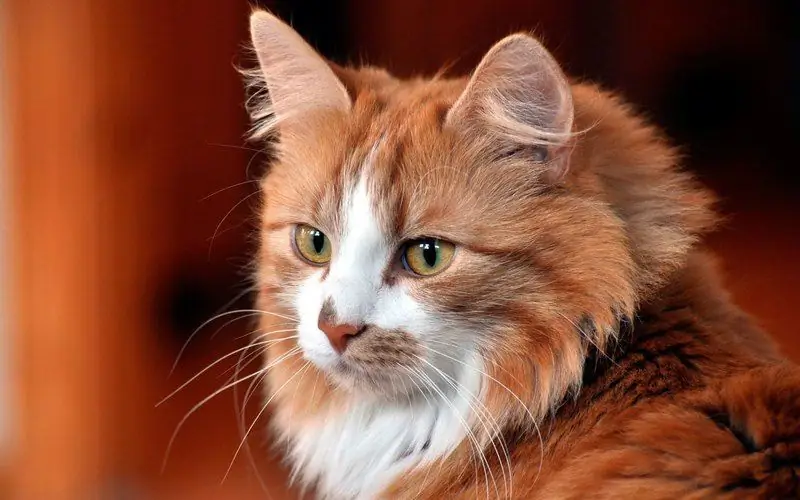
The causative agent of feline trichodectosis looks like the main symptoms. Complications of trichodectosis. How to detect and cure. Prevention of trichodectosis
Cystitis In Cats And Cats: Symptoms (blood In Urine And Others) And Treatment At Home, Medications (pills And Others), Veterinarian Advice
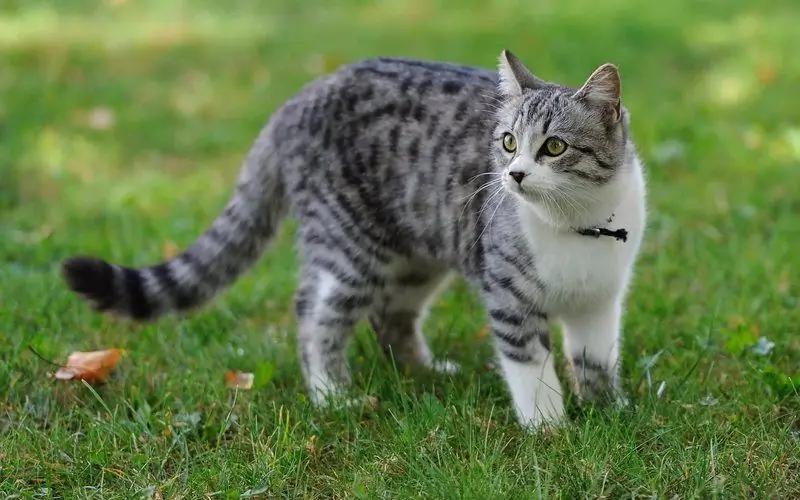
What causes cystitis, its symptoms, course forms, diagnosis, treatment. Caring for a sick cat, prevention of cystitis
Eosinophilic Granuloma In Cats: Symptoms And Treatment At Home, Prevention And Recommendations Of Veterinarians
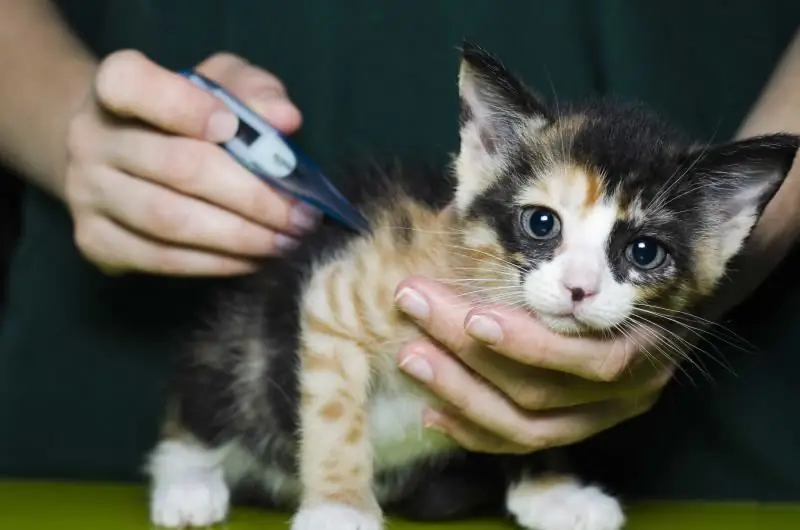
How does eosinophilic granuloma of cats look and proceed? Causes, diagnosis, prevention and treatment methods. Veterinarian recommendations
Enteritis In Cats: Symptoms, Diagnosis And Treatment (including At Home), Prevention, Recommendations Of Veterinarians
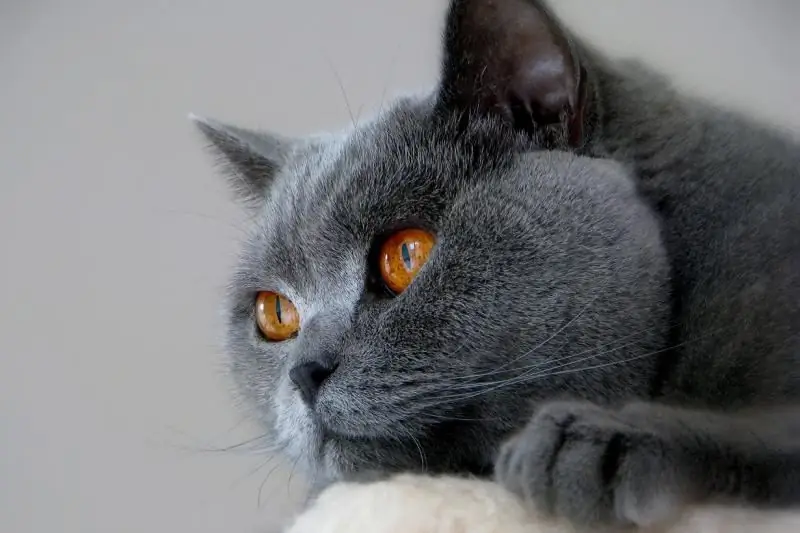
What is viral enteritis. Infection routes. Types of the disease. When to see your veterinarian. How to treat at home. Prevention. Doctor's advice
Flea Dermatitis In Cats: Symptoms (description And Photo), Diagnosis Of The Disease, Its Treatment At Home, Prevention
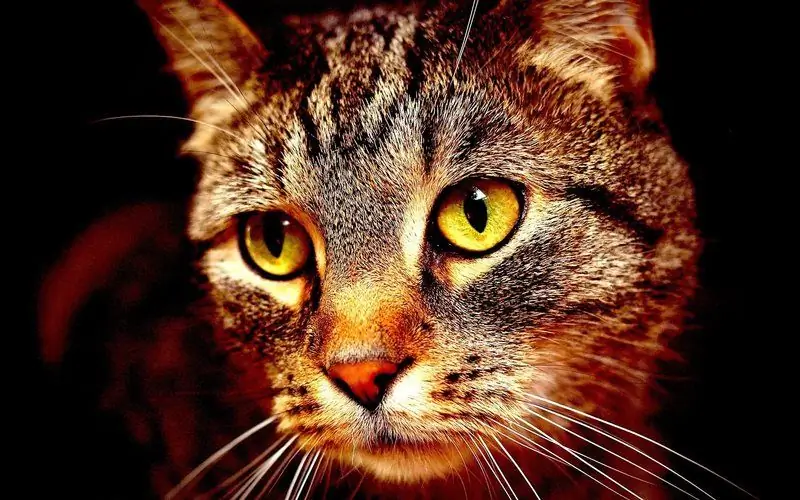
Features of fleas, the reasons for the development of flea dermatitis. How it develops, symptoms, how to diagnose and treat. Danger to people
